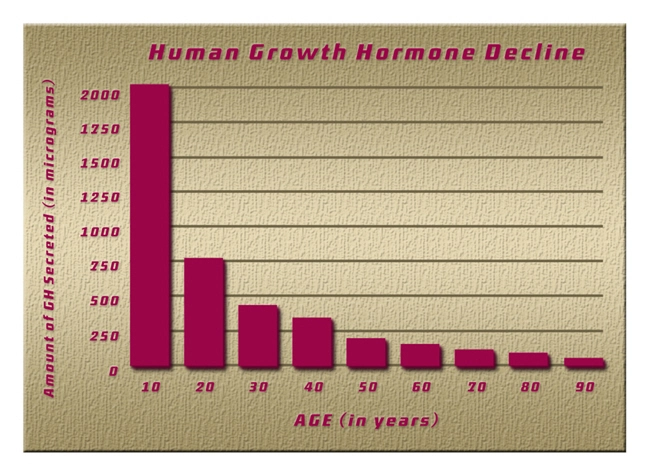

In the vast arena of psychopharmacology, one molecule that has garnered an impressive repute for its efficacy in managing depressive disorders is Escitalopram. Considered a mainstay among selective serotonin reuptake inhibitors (SSRIs), this compound presents distinct outcomes via its unique mechanism of action. This article delves deep to shed light on how Escitalopram influences serotonin levels, thereby offering therapeutic benefits in depression and anxiety disorders.
Escitalopram- An Overview
Escitalopram, commercially known as Lexapro, has etched its place in psychopharmacology due to its exceptional half-life, tolerability, and efficacy in combating depressive and anxiety disorders. As an SSRI, its primary action revolves around serotonin, a neurotransmitter in the brain responsible for mood regulation, among other functions.
The Role of Serotonin
Serotonin, also known as the "feel-good" neurotransmitter, plays a significant role in modulating our mood, emotions, and stress responses. A deficit in serotonin levels has been widely associated with depressive symptoms, theorizing that depression may be a consequence of a biochemical imbalance.
The Mechanism of Escitalopram
Escitalopram works in a rather elusive manner. Its primary mechanism involves inhibiting serotonin reuptake or its absorption back into the pre-synaptic neuron. The interruption of this process results in the increase of serotonin concentration in the synaptic cleft (the gap between neurons), thereby allowing it to exert a greater effect. Consequently, this obtains a desirable impact on mood regulation and relief from depressive symptoms and anxiety.
The Binding Affinity of Escitalopram
Another intriguing aspect of Escitalopram's action is its binding affinity. This drug demonstrates a high binding affinity to the serotonin transporter, attributable to its S-stereoisomer chemical structure. This high affinity implies that Escitalopram tends to stay longer in the location of action, kerbing serotonin re-uptake for extended periods, thereby maximizing its therapeutic effect.
Metabolism and Elimination
Metabolized primarily by the liver enzyme CYP2C19, Escitalopram undergoes significant first-pass metabolism, accounting for its long half-life, and proving beneficial in maintaining steady-state drug concentrations. It is eliminated slowly, contributing to its prolonged effect and capacity to maintain stable serotonin levels.
Conclusion
Understanding the role and mechanism of pharmacological agents like Escitalopram helps in advancing our knowledge of depression, anxiety and their pharmacotherapeutic management. The impact of escitalopram on serotonin levels contributes significantly to its clinical utility as a potent antidepressant. Further research, however, remains integral to unveiling more about the complex biochemistry of brain neurotransmitters and the possible ways of modulating them for better mental health outcomes.
Contact Us Today For A Free Consultation
Dear Patient,
Once you have completing the above contact form, for security purposes and confirmation, please confirm your information by calling us.
Please call now: 1-800-380-5339.
Welcoming You To Our Clinic, Professor Tom Henderson.

- Exploring the Relationship Between Escitalopram and Weight Changes in American Males [Last Updated On: February 16th, 2025] [Originally Added On: February 16th, 2025]
- Exploring the Therapeutic Potential of Escitalopram for Panic Disorders in American Males [Last Updated On: February 24th, 2025] [Originally Added On: February 24th, 2025]
- Exploring the Cognitive Effects of Escitalopram: Impacts on Memory, Attention, and Executive Function in Mood Disorders [Last Updated On: March 3rd, 2025] [Originally Added On: March 3rd, 2025]
- Escitalopram Use During Pregnancy: Benefits and Risks Explored [Last Updated On: March 4th, 2025] [Originally Added On: March 4th, 2025]
- Understanding Escitalopram: Experiences of American Males with Depression and Anxiety Treatment [Last Updated On: March 5th, 2025] [Originally Added On: March 5th, 2025]
- Understanding Escitalopram's Role in Treating Adolescent Depression and Anxiety [Last Updated On: March 6th, 2025] [Originally Added On: March 6th, 2025]
- The Pharmacological Profile of Escitalopram: A Potent SSRI for Depression and Anxiety [Last Updated On: March 7th, 2025] [Originally Added On: March 7th, 2025]
- Escitalopram's Efficacy in Treating OCD Among American Males: Benefits and Considerations [Last Updated On: March 8th, 2025] [Originally Added On: March 8th, 2025]
- Safely Withdrawing from Escitalopram: A Guide for American Men on SSRI Discontinuation [Last Updated On: March 8th, 2025] [Originally Added On: March 8th, 2025]
- Escitalopram: Efficacy and Side Effects in Antidepressant Therapy for American Men [Last Updated On: March 9th, 2025] [Originally Added On: March 9th, 2025]
- Exploring Escitalopram: Key Drug Interactions to Avoid for American Males [Last Updated On: March 12th, 2025] [Originally Added On: March 12th, 2025]
- Exploring the Impact of Escitalopram on Mental Health in American Males: A Nursing Perspective [Last Updated On: March 13th, 2025] [Originally Added On: March 13th, 2025]
- Exploring the Safety of Escitalopram in Elderly American Males: Essential Precautions [Last Updated On: March 15th, 2025] [Originally Added On: March 15th, 2025]
- Escitalopram Pharmacokinetics in American Males: Optimizing Treatment for Depression and Anxiety [Last Updated On: March 18th, 2025] [Originally Added On: March 18th, 2025]
- Escitalopram's Impact on American Males: Case Studies in Mental Health Improvement [Last Updated On: March 18th, 2025] [Originally Added On: March 18th, 2025]
- Escitalopram Efficacy in Treating PTSD Among American Males: Benefits and Considerations [Last Updated On: March 18th, 2025] [Originally Added On: March 18th, 2025]
- Escitalopram's Role in Treating Social Phobia in American Males: Efficacy and Considerations [Last Updated On: March 18th, 2025] [Originally Added On: March 18th, 2025]
- Escitalopram Overdose: Symptoms, Actions, and Prevention Strategies [Last Updated On: March 18th, 2025] [Originally Added On: March 18th, 2025]
- Strategies to Boost Escitalopram Adherence in American Males: Education, Technology, and Support [Last Updated On: March 18th, 2025] [Originally Added On: March 18th, 2025]
- Escitalopram: Mechanism, Efficacy, and Safety for American Males with Depression and Anxiety [Last Updated On: March 19th, 2025] [Originally Added On: March 19th, 2025]
- Escitalopram: American Men's Experiences with Depression and Anxiety Treatment [Last Updated On: March 20th, 2025] [Originally Added On: March 20th, 2025]
- Escitalopram's Impact on Sleep: Insights for American Male Patients [Last Updated On: March 21st, 2025] [Originally Added On: March 21st, 2025]
- Escitalopram's Journey: From Lab to Lifeline for American Males' Mental Health [Last Updated On: March 21st, 2025] [Originally Added On: March 21st, 2025]
- Monitoring Liver Function in American Males on Escitalopram: Essential Guidelines and Practices [Last Updated On: March 21st, 2025] [Originally Added On: March 21st, 2025]
- Escitalopram's Minimal Impact on Blood Pressure in American Males: A 12-Week Study [Last Updated On: March 21st, 2025] [Originally Added On: March 21st, 2025]
- CBT and Escitalopram: A Synergistic Approach to Men's Mental Health in America [Last Updated On: March 22nd, 2025] [Originally Added On: March 22nd, 2025]
- Guide to Transitioning from Fluoxetine to Escitalopram for American Men [Last Updated On: March 22nd, 2025] [Originally Added On: March 22nd, 2025]
- Escitalopram-Induced Mania: Risks, Symptoms, and Management in American Males [Last Updated On: March 23rd, 2025] [Originally Added On: March 23rd, 2025]
- Escitalopram's Impact on Co-morbid Physical Disorders in American Males: Benefits and Risks [Last Updated On: March 23rd, 2025] [Originally Added On: March 23rd, 2025]
- Escitalopram: A Promising Treatment for Depression in American Men During Andropause [Last Updated On: March 23rd, 2025] [Originally Added On: March 23rd, 2025]
- Escitalopram Use and Interactions for American Males: A Comprehensive Guide [Last Updated On: March 23rd, 2025] [Originally Added On: March 23rd, 2025]
- Escitalopram: Enhancing Mental Health in American Men - Uses, Effects, and Considerations [Last Updated On: March 23rd, 2025] [Originally Added On: March 23rd, 2025]
- Escitalopram's Role in Enhancing Palliative Care for American Males [Last Updated On: March 24th, 2025] [Originally Added On: March 24th, 2025]
- Escitalopram: A Key Treatment for Major Depressive Disorder in American Males [Last Updated On: March 24th, 2025] [Originally Added On: March 24th, 2025]
- Escitalopram: Enhancing Serotonin and Neuroplasticity in American Males' Mental Health Treatment [Last Updated On: March 24th, 2025] [Originally Added On: March 24th, 2025]
- Escitalopram: Effective Treatment for Body Dysmorphic Disorder in American Males [Last Updated On: March 24th, 2025] [Originally Added On: March 24th, 2025]
- Escitalopram's Impact on Anxiety in American Males: Efficacy and Considerations [Last Updated On: March 24th, 2025] [Originally Added On: March 24th, 2025]
- Escitalopram: Effective GAD Treatment for American Males in Comprehensive Care [Last Updated On: March 24th, 2025] [Originally Added On: March 24th, 2025]
- Escitalopram Safety and Liver Disease in American Males: Pharmacokinetics and Clinical Guidelines [Last Updated On: March 25th, 2025] [Originally Added On: March 25th, 2025]
- Escitalopram: Key Insights for Managing Depression and Anxiety in American Males [Last Updated On: March 25th, 2025] [Originally Added On: March 25th, 2025]
- Escitalopram: A Promising Treatment for Seasonal Affective Disorder in American Men [Last Updated On: March 25th, 2025] [Originally Added On: March 25th, 2025]
- Escitalopram Interactions with Antidepressants: Risks and Management in American Males [Last Updated On: March 25th, 2025] [Originally Added On: March 25th, 2025]
- Escitalopram's Future in U.S. Psychiatry: Innovations for American Males' Mental Health [Last Updated On: March 25th, 2025] [Originally Added On: March 25th, 2025]
- Escitalopram in Geriatric Psychiatry: Efficacy, Safety, and Dosing for Older American Males [Last Updated On: March 25th, 2025] [Originally Added On: March 25th, 2025]
- Escitalopram in Pediatric Males: Safety, Side Effects, and Monitoring Guidelines [Last Updated On: March 26th, 2025] [Originally Added On: March 26th, 2025]
- Escitalopram: Managing Sexual Side Effects in American Males [Last Updated On: March 26th, 2025] [Originally Added On: March 26th, 2025]
- Escitalopram's Role in Managing MDD Among American Males: Efficacy and Considerations [Last Updated On: March 26th, 2025] [Originally Added On: March 26th, 2025]
- Escitalopram Use and Serotonin Syndrome Risks in American Males: A Comprehensive Guide [Last Updated On: March 26th, 2025] [Originally Added On: March 26th, 2025]
- Escitalopram's Impact on BPD Symptoms in American Males: A Pilot Study [Last Updated On: March 26th, 2025] [Originally Added On: March 26th, 2025]
- Escitalopram: Enhancing Cognitive Function in American Men [Last Updated On: March 26th, 2025] [Originally Added On: March 26th, 2025]
- Escitalopram's Long-Term Effects on American Males: Benefits, Risks, and Alternatives [Last Updated On: March 26th, 2025] [Originally Added On: March 26th, 2025]
- Escitalopram: A Journey to Recovery from Depression in American Men [Last Updated On: March 27th, 2025] [Originally Added On: March 27th, 2025]
- Escitalopram's Efficacy in Treating Post-Stroke Depression in American Males: A Review [Last Updated On: March 27th, 2025] [Originally Added On: March 27th, 2025]
- Escitalopram as Adjunctive Therapy for Bipolar Disorder in American Males [Last Updated On: March 27th, 2025] [Originally Added On: March 27th, 2025]
- Escitalopram and Alcohol: Risks and Guidelines for American Males [Last Updated On: March 27th, 2025] [Originally Added On: March 27th, 2025]
- Escitalopram's Role in Treating Eating Disorders Among American Males [Last Updated On: March 27th, 2025] [Originally Added On: March 27th, 2025]
- Escitalopram: A Promising Therapy for Neuropathic Pain in American Males [Last Updated On: March 27th, 2025] [Originally Added On: March 27th, 2025]
- Escitalopram's Efficacy in Treating Agoraphobia Among American Males: A Comprehensive Review [Last Updated On: March 28th, 2025] [Originally Added On: March 28th, 2025]
- Escitalopram: Managing Chronic Depression in American Males - Efficacy and Considerations [Last Updated On: March 28th, 2025] [Originally Added On: March 28th, 2025]
- Escitalopram's Impact on Heart Health in American Males: Benefits and Risks [Last Updated On: March 29th, 2025] [Originally Added On: March 29th, 2025]
- Escitalopram: Key Insights for American Males on Depression and Anxiety Treatment [Last Updated On: March 29th, 2025] [Originally Added On: March 29th, 2025]
- Escitalopram's Impact on Cognitive Skills in American Males: A Medical Examination [Last Updated On: March 29th, 2025] [Originally Added On: March 29th, 2025]
- Escitalopram: Enhancing Serotonin for Mood Disorder Treatment in American Males [Last Updated On: March 30th, 2025] [Originally Added On: March 30th, 2025]
- Escitalopram's Impact on Depression in American Male Adolescents: Efficacy and Safety [Last Updated On: March 30th, 2025] [Originally Added On: March 30th, 2025]
- Escitalopram's Efficacy and Management in Treating Dysthymia for American Males [Last Updated On: March 31st, 2025] [Originally Added On: March 31st, 2025]
- Escitalopram's Impact on Autonomic Nervous System in American Males: Benefits and Side Effects [Last Updated On: April 1st, 2025] [Originally Added On: April 1st, 2025]
- Optimizing Escitalopram Dose Titration for American Males: A Medical Perspective [Last Updated On: April 1st, 2025] [Originally Added On: April 1st, 2025]
- Escitalopram's Role in Managing PMDD: Efficacy, Mechanism, and Considerations for American Males [Last Updated On: April 2nd, 2025] [Originally Added On: April 2nd, 2025]
- Escitalopram's Potential in Treating Postpartum Depression in American Males [Last Updated On: April 5th, 2025] [Originally Added On: April 5th, 2025]
- Escitalopram and Suicide Risk in Adolescent Males: A Critical Analysis [Last Updated On: April 6th, 2025] [Originally Added On: April 6th, 2025]
- Escitalopram Enhances Quality of Life in American Men with Depression: A Systematic Review [Last Updated On: April 6th, 2025] [Originally Added On: April 6th, 2025]
- Genetic Factors Influencing Escitalopram Response in American Males: A Pharmacogenomic Overview [Last Updated On: April 9th, 2025] [Originally Added On: April 9th, 2025]
- Escitalopram: Managing Side Effects in American Males for Better Mental Health [Last Updated On: April 9th, 2025] [Originally Added On: April 9th, 2025]
- Escitalopram: Effective SSRI for Depression and Anxiety in American Men [Last Updated On: April 9th, 2025] [Originally Added On: April 9th, 2025]
- Switching from Citalopram to Escitalopram: A Guide for American Males [Last Updated On: April 9th, 2025] [Originally Added On: April 9th, 2025]
- Managing Escitalopram Withdrawal: Strategies for American Males [Last Updated On: April 10th, 2025] [Originally Added On: April 10th, 2025]
- Escitalopram's Role in Treating Body Image Disorders in American Males [Last Updated On: April 11th, 2025] [Originally Added On: April 11th, 2025]
- Escitalopram and Psychotherapy: A Dual Approach for American Men's Mental Health [Last Updated On: April 11th, 2025] [Originally Added On: April 11th, 2025]
- Escitalopram: Effective SSRI for MDD and GAD in American Males [Last Updated On: April 12th, 2025] [Originally Added On: April 12th, 2025]
- Escitalopram Use in Diabetic American Males: Effects, Management, and Lifestyle Tips [Last Updated On: April 15th, 2025] [Originally Added On: April 15th, 2025]








